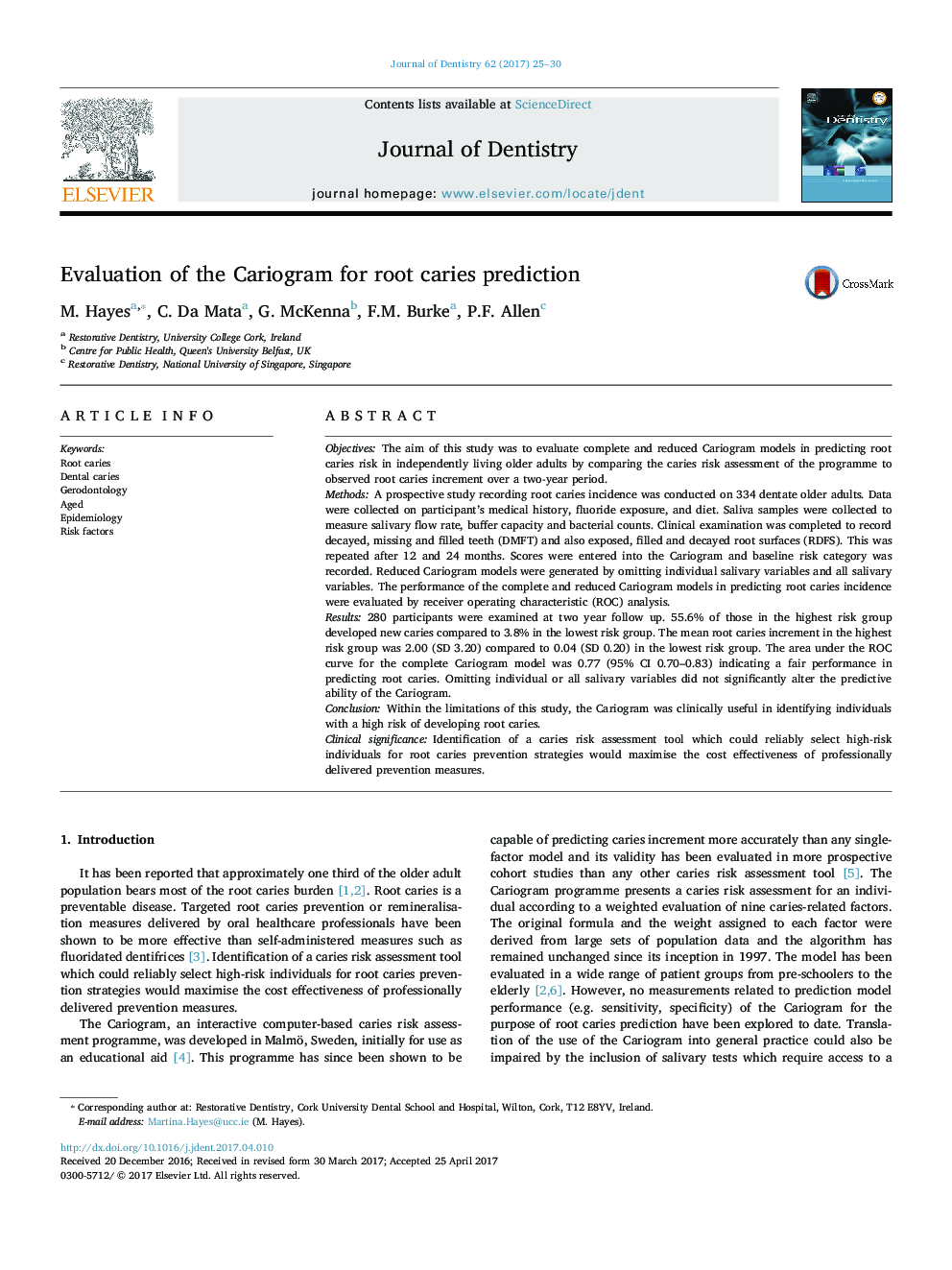| Article ID | Journal | Published Year | Pages | File Type |
|---|---|---|---|---|
| 5640581 | Journal of Dentistry | 2017 | 6 Pages |
ObjectivesThe aim of this study was to evaluate complete and reduced Cariogram models in predicting root caries risk in independently living older adults by comparing the caries risk assessment of the programme to observed root caries increment over a two-year period.MethodsA prospective study recording root caries incidence was conducted on 334 dentate older adults. Data were collected on participant's medical history, fluoride exposure, and diet. Saliva samples were collected to measure salivary flow rate, buffer capacity and bacterial counts. Clinical examination was completed to record decayed, missing and filled teeth (DMFT) and also exposed, filled and decayed root surfaces (RDFS). This was repeated after 12 and 24 months. Scores were entered into the Cariogram and baseline risk category was recorded. Reduced Cariogram models were generated by omitting individual salivary variables and all salivary variables. The performance of the complete and reduced Cariogram models in predicting root caries incidence were evaluated by receiver operating characteristic (ROC) analysis.Results280 participants were examined at two year follow up. 55.6% of those in the highest risk group developed new caries compared to 3.8% in the lowest risk group. The mean root caries increment in the highest risk group was 2.00 (SD 3.20) compared to 0.04 (SD 0.20) in the lowest risk group. The area under the ROC curve for the complete Cariogram model was 0.77 (95% CI 0.70-0.83) indicating a fair performance in predicting root caries. Omitting individual or all salivary variables did not significantly alter the predictive ability of the Cariogram.ConclusionWithin the limitations of this study, the Cariogram was clinically useful in identifying individuals with a high risk of developing root caries.Clinical significanceIdentification of a caries risk assessment tool which could reliably select high-risk individuals for root caries prevention strategies would maximise the cost effectiveness of professionally delivered prevention measures.
